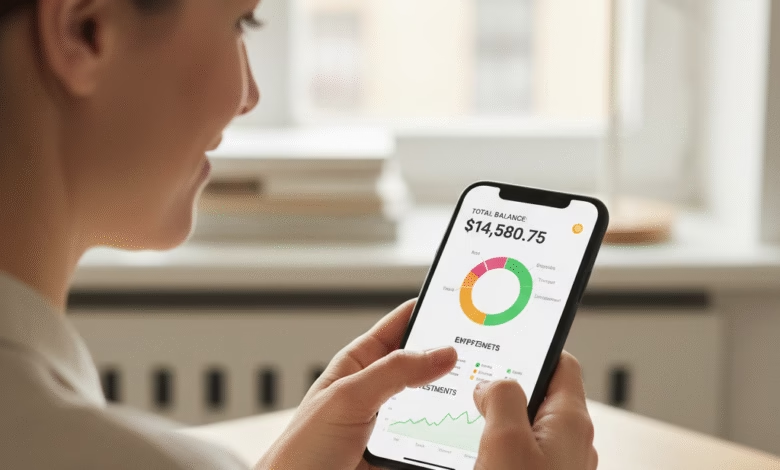What Is Short Selling and Why Does It Matter?
Understand what short selling is and how it works

In the world of investing, the golden rule seems simple: “buy low, sell high.” This single phrase captures the essence of how most people build wealth in the stock market. You buy shares in a company you believe will succeed, and you profit as its value increases over time. But what if you could profit from a stock that you believe is destined to fail?
Welcome to the world of short selling.
Short selling is one of the most misunderstood and controversial practices in finance. To its critics, it’s a cynical, predatory bet against a company’s success. To its proponents, it’s a vital market mechanism that exposes fraud, corrects overvaluation, and improves overall market efficiency.
Regardless of your viewpoint, understanding short selling is crucial for any serious investor. It’s a powerful force that can create fortunes, trigger market panics, and reveal deep truths about a company’s health. This guide will demystify short selling completely, breaking down how it works, why it matters, the immense risks involved, and its complex role in the modern market.
What Exactly Is Short Selling? A Simple Analogy

At its core, short selling is the practice of selling a stock you do not own, hoping to buy it back later at a lower price. It flips the traditional “buy low, sell high” mantra on its head. With short selling, you sell high first, and buy low later.
This concept can be confusing, so let’s use a simple analogy.
Imagine your friend owns a rare, signed first-edition book currently valued at $1,000. You, however, have done some research and believe a large number of unsigned copies are about to hit the market, which will cause the value of this book to drop significantly.
Here’s how you could “short sell” the book:
- Borrow: You ask your friend to lend you their signed book. You promise to return the exact same signed first-edition book to them in one month.
- Sell: You immediately take the borrowed book and sell it on the open market for its current price of $1,000. You now have $1,000 in cash, but you are “short” one book that you owe your friend.
- Wait: As you predicted, the new copies flood the market, and the book’s value plummets. A month later, an identical signed first-edition copy is now selling for only $200.
- Buy to Cover: You take $200 of the $1,000 you have and buy that identical book.
- Return & Profit: You return the book to your friend as promised. You are left with $800 ($1,000 from the initial sale minus the $200 you spent to buy the replacement book). That $800 is your profit.
This is precisely how short selling works in the stock market, but with shares instead of books.
How Does Short Selling Work? The Step-by-Step Mechanics
The process of shorting a stock involves a brokerage account and a few key steps. It’s more complex than simply buying a stock.
Step 1: Open a Margin Account
To short sell, you cannot use a standard cash account. You need a margin account with a broker. This is because you are borrowing shares that have value, and the broker needs collateral (the funds and securities in your margin account) to protect themselves in case the trade goes against you.
Step 2: Borrow the Shares
You identify a stock you believe is overvalued—let’s say “Company XYZ” is trading at $100 per share. You instruct your broker that you want to short sell 100 shares. Your broker then locates another investor who owns XYZ shares and is willing to lend them out (often large institutions or other clients) and borrows them on your behalf. These borrowed shares are then deposited into your account.
Step 3: Sell the Borrowed Shares
Your broker immediately sells those 100 borrowed shares at the current market price of $100. Your account is credited with $10,000 (100 shares x $100). However, this is not your profit yet. Your account now shows a “short” position of -100 shares of XYZ. You are obligated to return these 100 shares at some point in the future.
Step 4: The Waiting Game (The Price Drops… or Rises)
This is where your thesis is tested. You wait for the stock price of Company XYZ to fall as you predicted.
- Scenario A (You are correct): The company releases a poor earnings report, and the stock price drops to $60 per share.
- Scenario B (You are wrong): The company announces a breakthrough product, and the stock price soars to $150 per share.
Step 5: “Buy to Cover” and Close the Position
To close your short position, you must buy back the same number of shares you borrowed from the open market. This is known as “buying to cover.”
- In Scenario A (Profit): You buy back 100 shares of XYZ at the new price of $60. This costs you $6,000. You initially received $10,000, so your gross profit is $4,000 ($10,000 – $6,000). You have successfully sold high and bought low.
- In Scenario B (Loss): You must buy back 100 shares at the new price of $150. This costs you $15,000. Since you only received $10,000 from the initial sale, you have a loss of $5,000 ($10,000 – $15,000).
The High-Stakes Risks: Why Short Selling Is Not for Beginners

While the potential for profit is clear, short selling is an extremely high-risk strategy that is unsuitable for most investors. The risk profile is the complete opposite of buying a stock.
The Terror of Unlimited Losses
When you buy a stock (go “long”), the most you can possibly lose is your initial investment. If you buy a stock at $50, the lowest it can go is $0, meaning your maximum loss is $50 per share.
When you short a stock, your potential loss is theoretically infinite.
If you short a stock at $50, you hope it goes to $0. But there is no ceiling on how high the stock price can rise. It could go to $100, $200, $500, or even higher. Because you are obligated to eventually buy back the shares at the market price, every dollar the stock goes up is a dollar you lose. This asymmetrical risk is the single most dangerous aspect of short selling.
Margin Calls
Since you are borrowing on margin, your broker requires you to maintain a certain level of equity in your account as collateral. If the shorted stock rises sharply in price, your losses mount, and the equity in your account will fall. If it drops below a certain threshold, the broker will issue a “margin call,” demanding you deposit more cash or sell other securities to bring your equity back up. If you fail to do so, the broker can forcibly close your short position by buying back the shares at the current high price, locking in your losses.
Borrowing Costs and Dividends
Short selling isn’t free. You have to pay interest on the value of the borrowed shares, known as the “cost to borrow.” For hard-to-borrow stocks, this fee can be very high. Furthermore, if the company pays a dividend while you are shorting its stock, you are responsible for paying that dividend to the person from whom you borrowed the shares.
What Is a “Short Squeeze”? The Ultimate Nightmare for Short Sellers
A short squeeze is one of the most explosive events in the stock market and represents the ultimate risk for short sellers. It occurs when a heavily shorted stock starts to rise in price instead of fall.
Here’s the chain reaction:
- The Trigger: A positive catalyst hits the company—a great earnings report, a new product announcement, or even just a surge in buying interest.
- Initial Rise: The stock price begins to tick upward. The first wave of short sellers starts to feel the pain of their mounting losses.
- Forced Buying: To cap their losses, these short sellers are forced to “buy to cover” their positions.
- The Vicious Cycle: This wave of forced buying adds massive fuel to the fire. The surge in demand from short sellers covering their positions drives the stock price even higher, even faster.
- The Squeeze: This rapid price spike triggers margin calls for other short sellers, forcing them to buy back the stock at even more inflated prices. This creates a cascade of panic-buying that can send a stock price to astronomical levels in a very short period, completely detached from the company’s underlying fundamentals.
The most famous recent example of this was the GameStop (GME) saga in 2021, where retail investors on platforms like Reddit coordinated to buy GME stock, triggering a massive short squeeze that inflicted billions of dollars in losses on hedge funds that were heavily shorting the company.
The Great Debate: Is Short Selling Good or Bad for the Market?

Short selling remains a deeply controversial topic, with compelling arguments on both sides.
The Case for Short Selling:
- Price Discovery and Efficiency: Short sellers act as a balancing force against irrational exuberance. By betting against overvalued companies, they help pull inflated stock prices back down to more realistic levels.
- Exposing Fraud and Mismanagement: Some of the greatest corporate frauds in history were first uncovered by diligent short sellers. They have a strong financial incentive to dig deep into a company’s financials and operations to find hidden problems. Famous short seller Jim Chanos was instrumental in exposing the fraud at Enron.
- Providing Liquidity: Short selling adds to the total volume of trading, which can increase market liquidity and make it easier for all investors to buy and sell securities.
The Case Against Short Selling:
- Predatory Practices: Critics argue that short sellers can engage in “short and distort” campaigns, where they take a short position and then spread negative rumors or misleading research to deliberately drive a stock’s price down for their own profit.
- Accelerating Panics: During a market downturn, a wave of short selling can exacerbate the decline, turning a correction into a full-blown crash as it adds immense downward pressure on prices.
- Betting Against Success: On a fundamental level, many find it unethical to profit from a company’s misfortune, which could involve employee layoffs and economic disruption.
The Final Word: A Powerful Tool for Experts
Short selling is far more than just an investment strategy; it is a fundamental, albeit risky, component of modern financial markets. It provides a necessary check on corporate hype and investor euphoria, rewarding those who can accurately identify weakness and overvaluation.

However, its capacity for unlimited losses and its vulnerability to violent short squeezes make it a domain best left to sophisticated, experienced, and well-capitalized professional investors. For the average individual focused on long-term wealth creation, the timeless wisdom of “buy low, sell high” remains the most reliable path. Understanding what short selling is, however, gives you a more complete picture of the forces at play in the market, making you a more knowledgeable investor overall.





